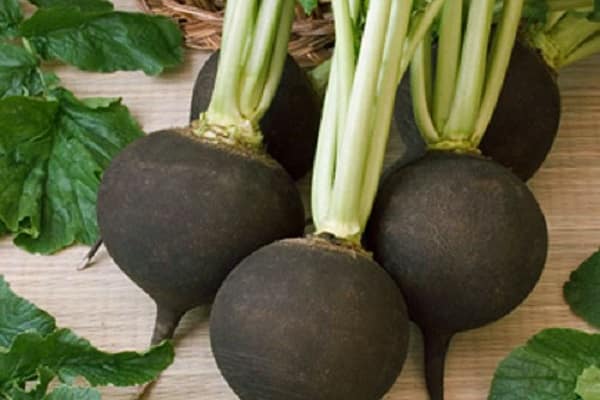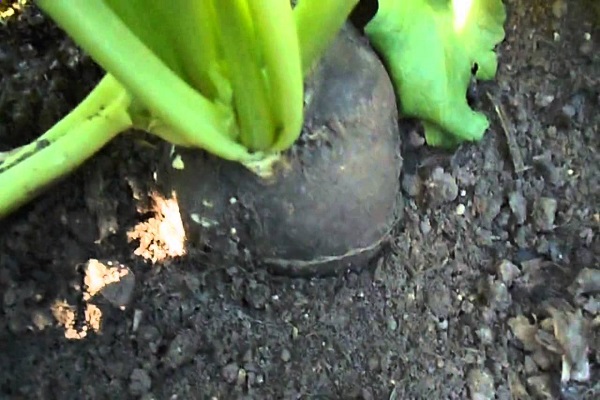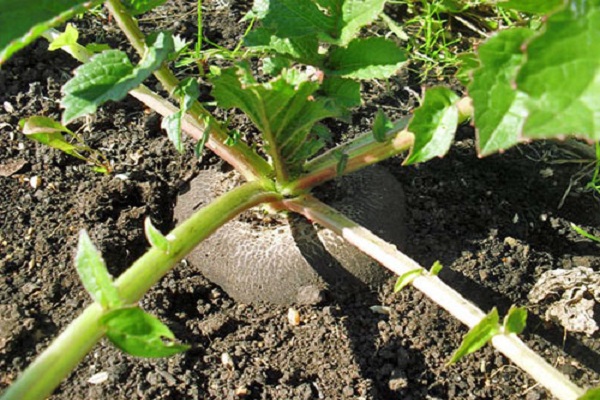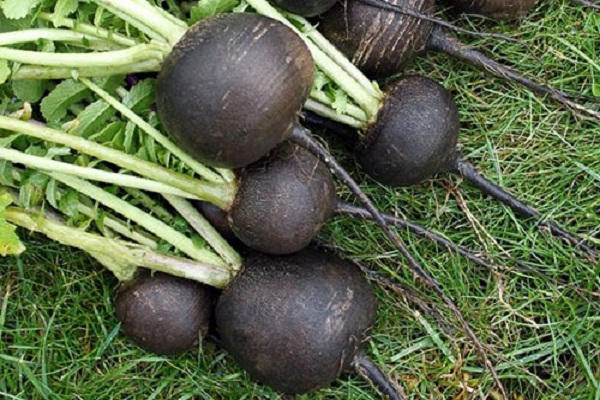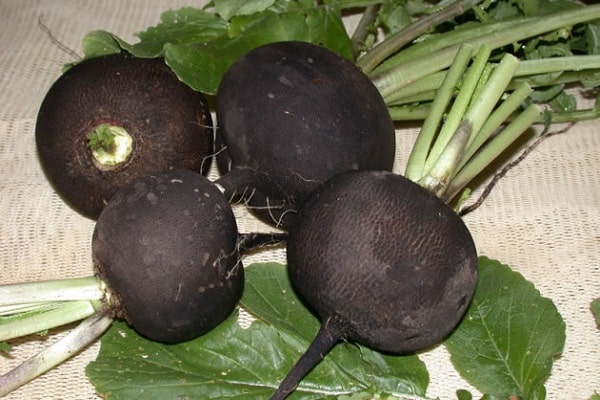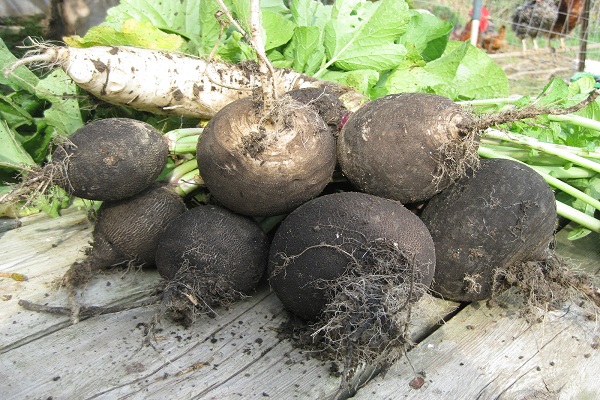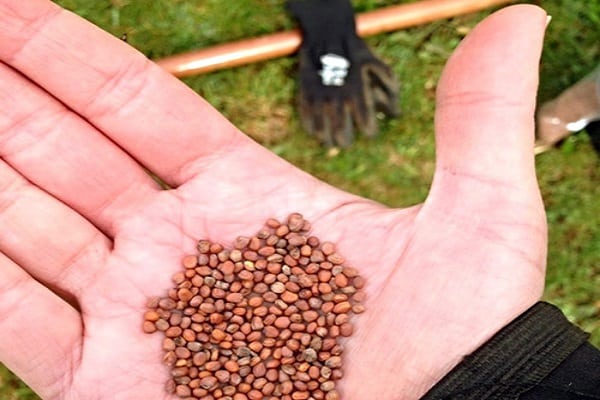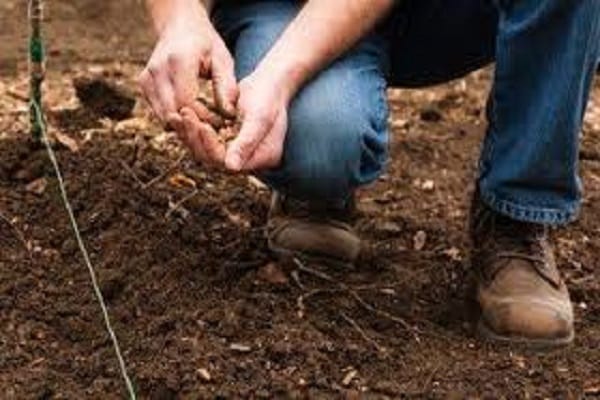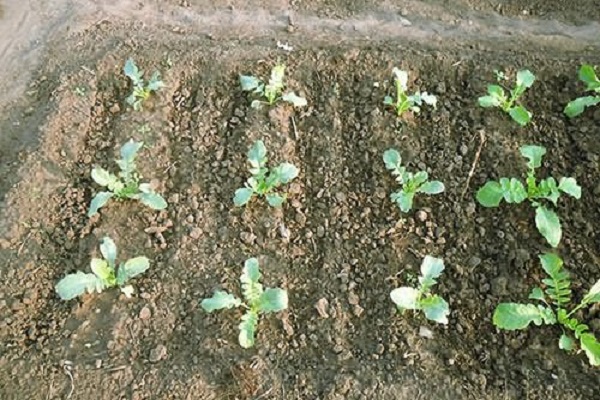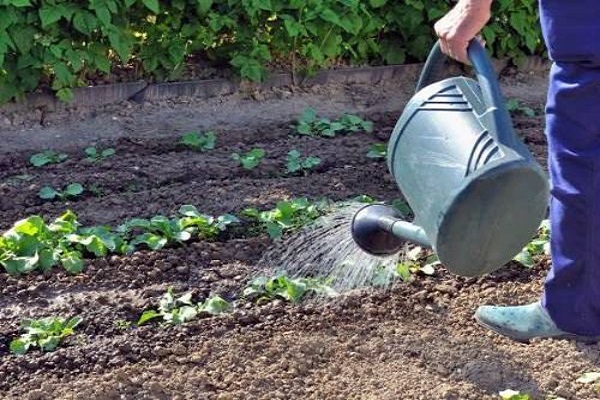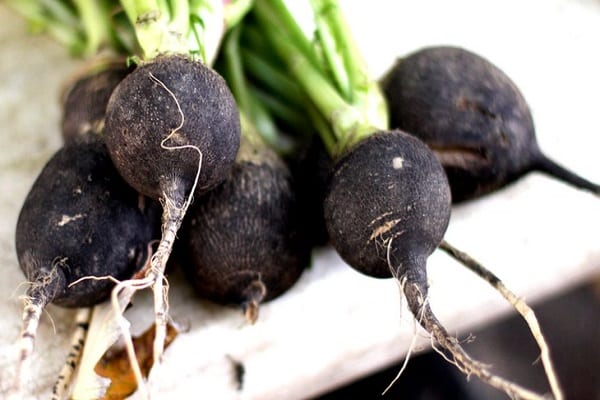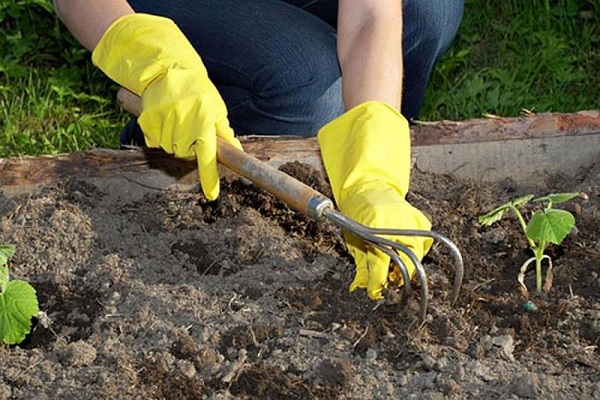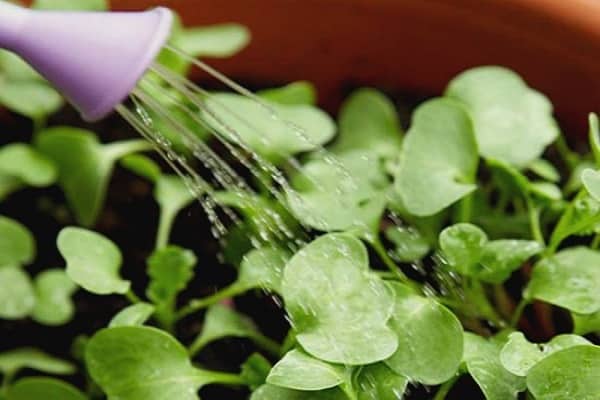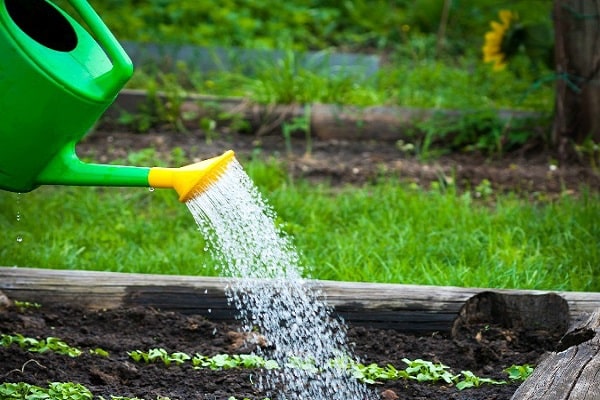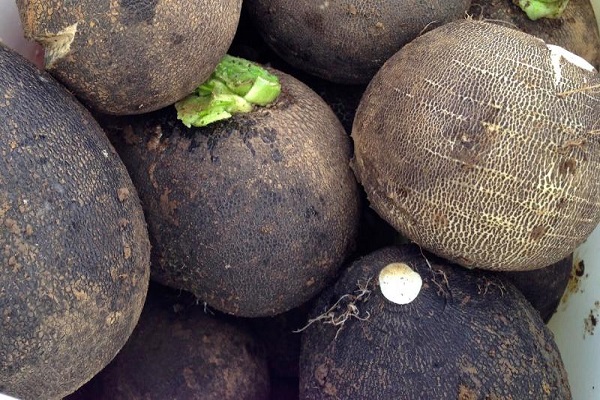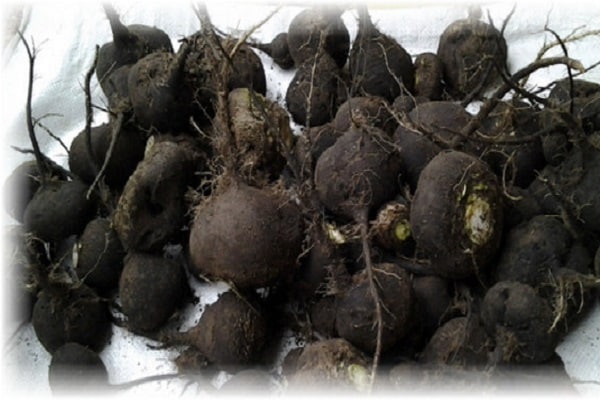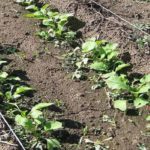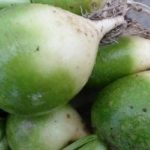Many gardeners are engaged in growing black radish. This crop is easy to buy in the vegetable department of the store. But root vegetables from your own garden are much tastier.
Radish dishes diversify the country menu. In winter, it is a supplier of vitamins and microelements. Traditional medicine has accumulated enough recipes from root vegetables.
The crop is easy to grow. Even an inexperienced gardener can do it.To obtain a high yield, you must follow the rules of agricultural technology.
Description of the variety
Breeders offer many varieties of black radish. They differ in terms of ripening. General signs:
- The plant belongs to the Cruciferous family. Relatives: cabbage, turnips, radishes.
- In the first year after planting, it forms a root crop. In the second there is a peduncle.
- The round-shaped root crop grows from 200 to 600 g. The skin is black and dense. The pulp is white, juicy. The taste is pungent, sometimes harsh.
- The plant has green, pinnately dissected leaves.
- The seeds are small, dark, round.
- According to the ripening period, it is divided into early (40-50 days from germination to harvest), medium (50-65 days) and late (100-120 days) varieties.
Radish is unpretentious. It is easy to care for. A distinctive feature of the variety is its cold resistance. The plant produces a consistently high yield.
Gardeners prefer growing winter (late) nigella. It has a denser and sharper-tasting pulp. Excellent storage.
Seed preparation
For sowing, you can use purchased seeds or collect them from previously grown radishes.
Getting your own material
Summer residents are interested in how to get the seeds themselves. To do this, you should plant the root crop of last year's harvest. It should be smooth, without damage, with a healthy growing point.
The plant will release a flower stalk. It should be tied up. To prevent mature seeds from spilling out, it is recommended to tie the peduncle with gauze. Once ripe, the stem should be cut, dried, and then threshed.
Separate debris and stem particles from the seeds. Store in a jar with a tight-fitting lid. The year of collection should be written down: this will help avoid sowing seeds that have lost their germination.
Pre-sowing work
Before sowing, the gardener should carry out preliminary preparation of the seeds. How to proceed:
- Seeds from well-known manufacturers undergo pre-planting preparation. You don't need to do anything with them.
- Your own seeds should be checked for germination. Pour 20 pieces into a glass of water. Stir. Full ones will sink to the bottom, empty ones will remain floating. Count the total, divide by 20 and multiply by 100. This is the percentage of germination. With its help, it is determined how many seeds are needed for sowing.
- Disinfect your own seeds in a solution of potassium permanganate. The solution is dark pink.
- To speed up germination, soak in a solution of potassium humate for 30 minutes.
To harden and increase germination, some gardeners heat the seeds for 2-3 hours in a warm aqueous solution (40 degrees Celsius). They are then washed in cold water and dried.
Radish planting rules
Chernushka is an unpretentious crop. It is easy to grow in the garden. But you need to know agricultural technology. The size and quality of the harvest depends on the exact implementation of the rules.
When to plant?
Summer residents are wondering: they missed the sowing deadline, is it possible to plant later? Compliance with the regime is necessary to prevent bolting of the crop. Radish is a short-day crop. As the length of the solar period increases, it throws out a peduncle.
Sowing time:
- April - early varieties;
- May - early ripening;
- early-mid July - winter.
Some gardeners remember: if you remove the garlic, it’s time to plant winter radishes.
Where to plant?
The culture loves sunny areas with light fertile soils. They must allow water and air to pass through. It is worth considering water drainage: the plant loves moist soil, but does not tolerate waterlogging.
Soil reaction: neutral or slightly alkaline. Acid is neutralized with dolomite flour, lime or ash.
When planting in any open ground, it is necessary to observe crop rotation of vegetable crops.It is forbidden to plant radishes after radishes and other cruciferous plants. Excellent predecessors are zucchini, cucumbers, tomatoes, and garlic.
If there is not enough space, it is recommended to plant radish as a compacting crop for tomatoes, potatoes, and onions.
How to plant?
To obtain a high yield, the plant should be planted in a square-cluster manner. The distance between adjacent holes should be 10-12 cm. Early varieties are planted thicker (8 cm), and later varieties less often (15 cm).
It is recommended to deepen it by 2-3 cm. Sow 3 seeds in each hole. The soil should be kept moist until germination.
Features of care
Radish is an unpretentious crop. But it requires some care.
Thinning
The event provides the gardener with even, large root crops.
When 3-4 true leaves grow, it is recommended to thin out the planting for the first time. The weakest sprout needs to be removed. After 3 weeks you should thin out again. The strongest sprout remains in the hole.
Loosening
Radish does not tolerate the crust that forms on the soil surface. It is recommended to loosen the bed after rain. The procedure destroys the channels through which moisture evaporates. It should be remembered: loosening is “dry” watering.
Watering
The plant requires even soil moisture. Alternating dry periods and watering leads to cracking of root crops.
Early varieties require moisture weekly, late varieties - 2 times a month. It is recommended to water in the morning or evening (when the heat subsides). Water should not get on the tops. Drip irrigation should be provided.
Top dressing
For early varieties, 2 feedings are enough. Winter - 3. It is recommended to apply the first fertilizing with nitrogen after the appearance of cotyledon leaves.For other fertilizing, a mineral complex (nitrogen: potassium: phosphorus) should be added. 2 weeks before harvesting, feeding must be stopped.
Caring for radish color
Sometimes gardeners receive flowers instead of a harvest. Plants go in an arrow direction. There are several reasons:
- non-compliance with planting deadlines;
- excessive dryness of the soil;
- thickened plantings;
- no weeding;
- hot weather.
Following the rules of care will help you avoid discoloration.
Protection from diseases and pests
The root crop is affected by the cruciferous flea beetle. To combat it, it is recommended to dust the plantings with ash or shag. Great results come from working together radish planting and onions.
To combat slugs, the edges of the ridges are sprinkled with lime or crushed eggshells. Some gardeners use insecticides.
The plant suffers from powdery mildew and mosaic. Diseases can be prevented by following the rules of agricultural technology. Sometimes it is reasonable to apply treatment with copper-containing preparations.
Harvest and storage
Radishes should be harvested promptly. Early varieties are dug up as they ripen. It is recommended to store them in the fruit compartment of the refrigerator. Duration: 7-10 days.
Winter radishes are dug up at the end of October before the first frost. For harvesting, you should use a pitchfork: they cause less damage to root crops.
The radish must be freed from the tops, dried in the shade and stored in the basement or cellar. Sometimes containers with crops are filled with sand. The humidity in the room should be maintained at 50-70 percent: otherwise the root vegetables will dry out.

